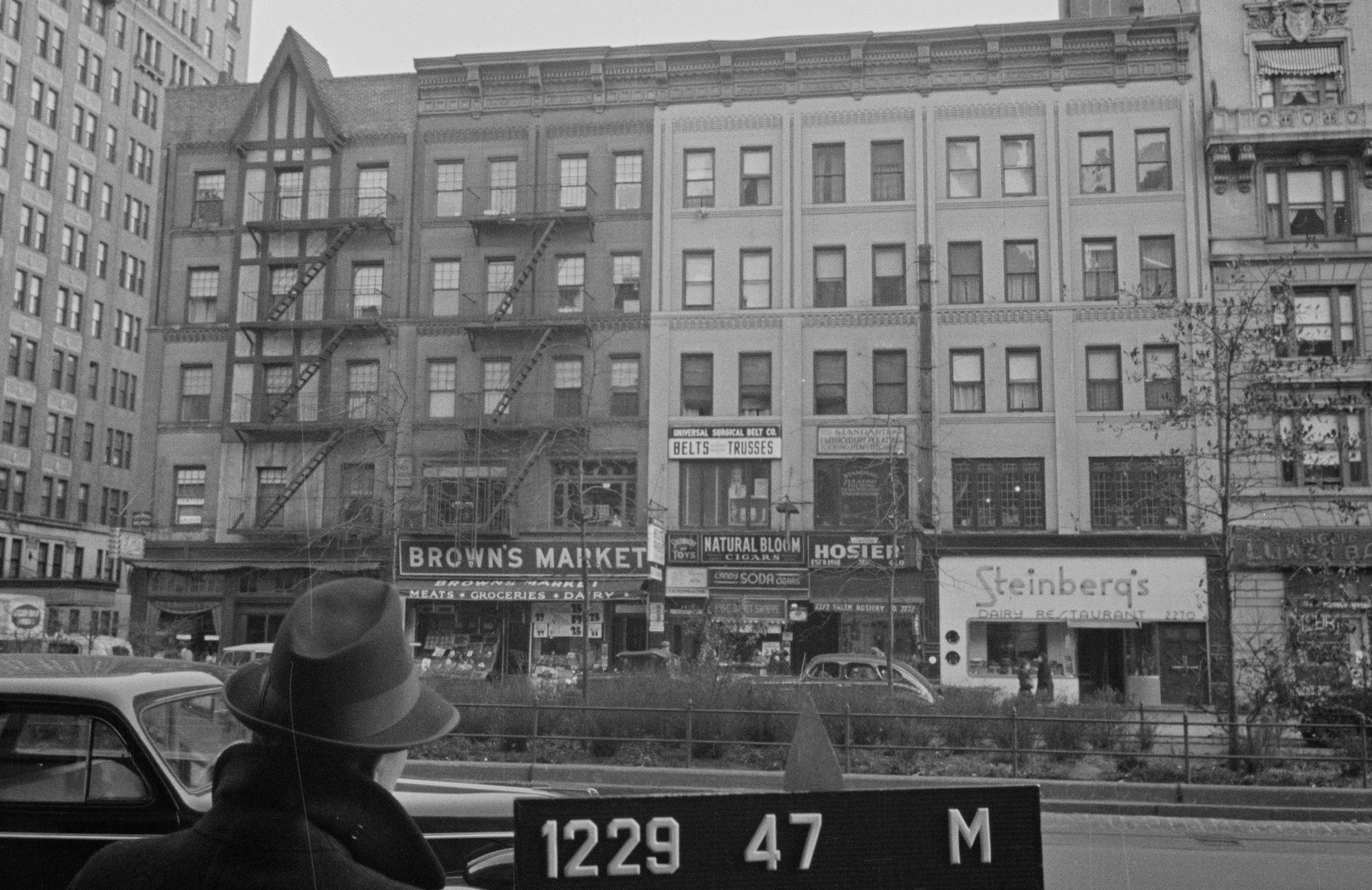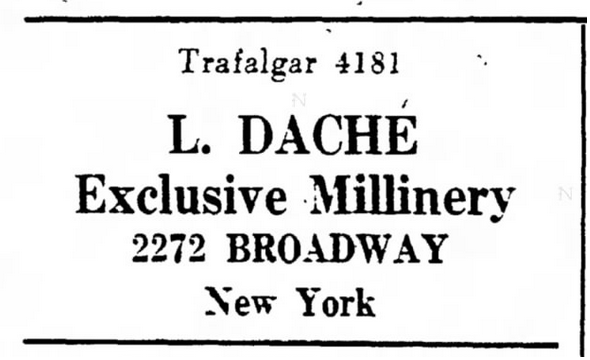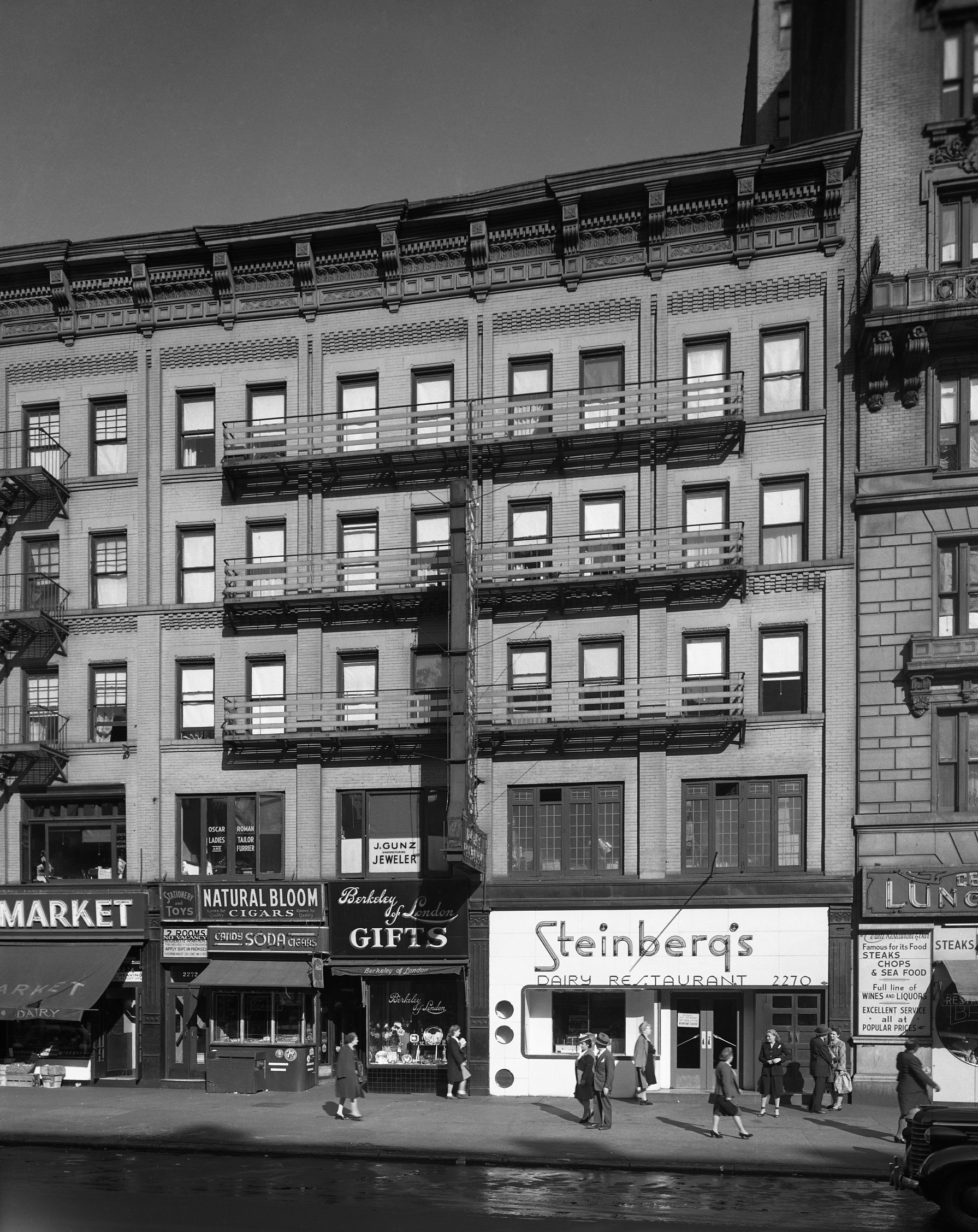
2270-2272 Broadway
by Tom Miller
In 1887 real estate developer F. F. Smith hired architect J. Averitt Webster to design four five-story “flat and store” buildings on Broadway, stretching south from the southeast corner of West 82nd Street. Completed the following year, each of the identical structures was four bays wide. A continuous cast metal cornice gave them the impression of a single building.
The two southernmost structures, 2270 and 2272 Broadway, were purchased by Henriette Blinn. Her tenants were middle class, like Henry C. Hobson, who gave banjo lessons from his apartment in 2270 Broadway in 1891; and Thomas E. Keane, a “book canvasser,” or salesman, who lived in 2272. Keane left for work on the morning of August 25, 1899, but did not get far. As he crossed Amsterdam Avenue at 81st Street, he was hit by a streetcar. The World reported, “The fender rolled him along twenty-five feet before the car was stopped.” Although a responding ambulance surgeon (the 1899 version of today’s EMT) wanted him to go to the hospital, Keane refused and went back home.
At the turn of the century, the store space at 2270 Broadway was home to A. Ostrom Rowe’s electrical contracting business. Next door was the shop of another contractor, S. Deutsch, described by The Tammany Times as a “practical plumber, gas-fitter, tinsmith and sheet iron worker.” The periodical said, “Mr. Deutsch paints and repairs roofs, gutters and leaders and installs hot water in houses.”
The two buildings were leased to Stewart Hemingway in 1921. He converted the second floors of each to offices, with “non-housekeeping” apartments above. The term meant that there were no kitchens and cooking was prohibited. An advertisement listed a “Two room apartment; every improvement; maid service; $90.” The rent would be equal to about $1,350 per month today.
The restaurant was run by Aaron Reuben, whose trademark sandwich, “the Reuben,” quickly became famous.
The refurbished stores became home to Reuben’s Pure Food Shop (in 2270) and the Carrye Marquis dressmaking shop. The restaurant was run by Aaron Reuben, whose trademark sandwich, “the Reuben,” quickly became famous. He later told a reporter, “The sandwich that made the biggest hit was what I called the Reuben sandwich. It was really four sandwiches in one. Between the layers of bread were a layer of Virginia ham, a layer of Swiss cheese, and a layer of roast turkey, along with cole slaw and mustard dressing.”
Trouble came on September 6, 1922, when Prohibition agents staged a raid. The New York Herald reported, “A. Ruben [sic] owner of Ruben’s [sic] Pure Food Shop at 2270 Broadway, yesterday was held in $500 bail…The detectives visited the place at 2 o’clock in the morning and after an hour’s search say [they] found a half pint bottle of whisky hidden in top of a locker in the cellar.” Aaron Reuben vehemently denied having had the liquor in his shop and accused the arresting detective of planting the bottle.
A week later, on September 14, the charges against Reuben were dropped. But that was not enough for the indignant restaurant owner. The New York Herald reported, “He said that he would ask for the detective’s arrest on a charge of perjury.” In response, the Inspector James S. Bolan stationed police officers in and outside the restaurant, their mere presence discouraging patrons from entering. But if Bolan thought he could bully Reuben, he was mistaken.
On September 26, Inspector Bolan appeared in the West Side Court in answer to a summons obtained by Aaron Reuben, “who charges the Inspector with oppression and alleges that policemen have been illegally kept in the restaurant by Bolan, working in three shifts to cover the twenty-four hours of the day,” said The Evening World. Rueben’s attorney pointed out to the judge that the police “were not withdrawn” after Rueben had been exonerated of all charges.
Nearly a month after filing his complaint, there was little progress. In questioning police officers, Reuben’s attorney was told “they couldn’t remember” who stationed them at the restaurant. Refusing to give up, on November 16, 1922, attorney Eugene McGee told reporters “he would subpoena Police Commissioner Enright to appear at the next hearing, November 27, if he couldn’t find out any other way.” At that hearing, Magistrate Oberwager dismissed the charges, saying he had not found any evidence of oppression. Nevertheless, Aaron Reuben had clearly made his point.
Over the years Reuben’s restaurant became a destination spot. Nearly a decade after the incident, he told a reporter from The Sun, “I suppose that I have the most celebrated lot of customers of any restaurant man in the business. I could name you a list of celebrities that would fill a page. If you take the stage, the motion pictures, the official world, society and about every profession and activity and pick out the most famous people, then you will have the list of my customers.”
He credited William Randolph Hearst with his restaurant’s fame. He said the publisher “was a sort of discoverer of mine and got his friends coming here. Then they got others and pretty soon it became a fad to drop in at Reuben’s after the show and get one of his sandwiches.”
On the evening of February 6, 1923, stockbroker Kevin W. Kennedy was in bed reading, “when he caught sight of flames behind a victrola,” reported The Morning Telegraph. Unable to put out the flames, the 29-year-old called firefighters. When they arrived, they found Sarah Fernandez, who lived in the apartment directly under him, hysterical.
He credited William Randolph Hearst with his restaurant’s fame.
“Save my Queenie, save my Queenie” she begged repeatedly. The Morning Telegraph wrote, “’Where is she?’ asked firemen, who forcibly kept the woman from going into the building.” She directed them to her apartment. “Fireman hurried to the woman’s apartment on the third floor and found Queenie, a shivering Pekingese, on a fancy cushion of the bed. Water dripped from the floor above about Queenie, but she was unharmed.” The fire, which was quickly extinguished, was confined to Kennedy’s apartment.
In 1927 the store next to Reuben’s Pure Food Shop became home to one of two millinery shops run by hat designer Lilly Daché. She revolutionized women’s hats and, like Aaron Reuben, drew a celebrated clientele. Lilly Daché’s creative designs, at a time when no woman would leave her front door without a hat, were exotic and ground-breaking. And expensive. She would be responsible for introducing the turban to female wardrobes and shocking the fashion world with deliciously bizarre designs. Eventually erecting her own building in Midtown, the House of Daché, she counted among her loyal customers Marlene Dietrich, Gertrude Lawrence, Eleanor Roosevelt, Louella Parsons and Dorothy Parker. (It Lilly Daché who designed the fruit-laden turbans worn by Carmine Miranda.)
In the last quarter of the century, the two shops saw a succession of restaurants and other businesses. In 1997 Laytner’s Linens opened in the combined stores and would remain until 2020 when it moved slightly north to the corner. The space was taken by Town Shop, which remains.
Tom Miller is a social historian and blogger at daytoninmanhattan.blogspot.com
Building Database
Keep Exploring
Be a part of history!
Think Local First to support the businesses at 2270-2272 Broadway:
Meet Danny Koch!
Meet Ben Katchor!




